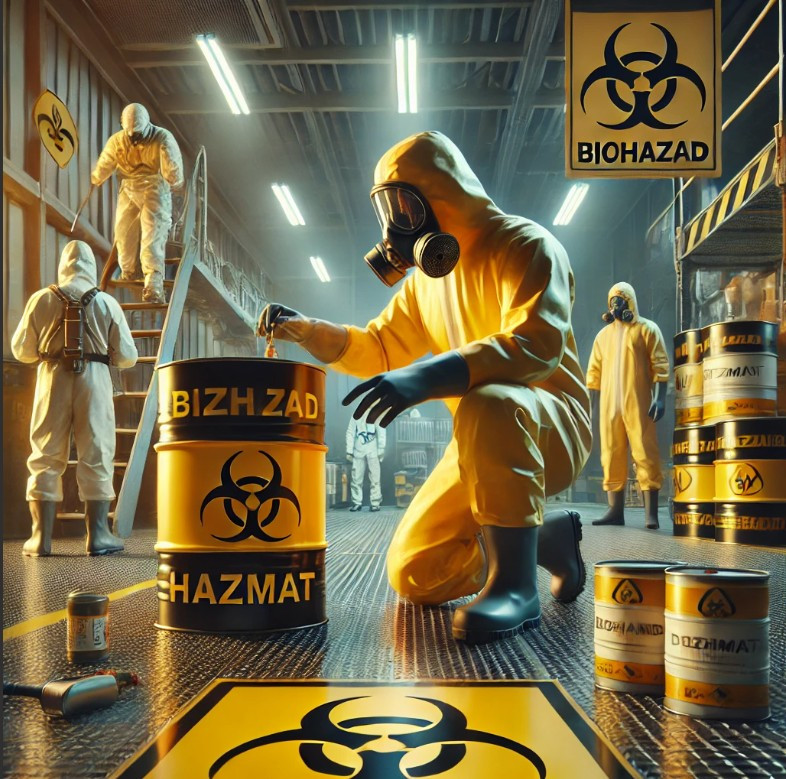Workplace safety is a priority in any industry, but when hazardous materials are involved, the risks increase significantly. Whether in construction, manufacturing, warehousing, or transportation, employees must be trained to handle hazardous materials properly to prevent accidents, injuries, and environmental damage.
At Get Drivers Ed, we believe that understanding hazardous materials is the first and most critical step in ensuring workplace safety. By knowing how to identify, handle, and store these substances correctly, workers can protect themselves and their colleagues while staying compliant with OSHA regulations.
What Are Hazardous Materials?
Hazardous materials, often referred to as hazmat, include substances that pose risks to health, safety, or the environment. These materials are commonly found in industries such as transportation, chemical manufacturing, construction, and waste management.
1. Categories of Hazardous Materials
Hazardous materials are classified into several categories based on their physical and chemical properties. Understanding these categories helps workers identify risks and take appropriate precautions.
Flammable Liquids and Gases
Examples: Gasoline, propane, ethanol
Risks: Fire hazards, explosions, toxic fumes
Safety Measures: Proper ventilation, storage in approved containers, fire prevention training
Toxic and Poisonous Substances
Examples: Pesticides, industrial solvents, lead compounds
Risks: Poisoning through inhalation, skin contact, or ingestion
Safety Measures: Use of personal protective equipment (PPE), proper labeling and handling procedures
Corrosive Materials
Examples: Sulfuric acid, ammonia, bleach
Risks: Severe burns, respiratory damage
Safety Measures: Proper storage and use of protective clothing and eyewear
Radioactive and Explosive Materials
Examples: Uranium, dynamite, compressed gas cylinders
Risks: Radiation exposure, explosions
Safety Measures: Secure storage, controlled handling, emergency response protocols
At Get Drivers Ed, we provide hazmat training that covers these classifications, ensuring workers know how to recognize and safely handle dangerous substances.
Why Training Is Critical for Handling Hazardous Materials
2. The Importance of Hazard Communication
The Hazard Communication Standard (HCS), established by OSHA, requires employers to educate employees on hazardous substances present in the workplace. This regulation is designed to reduce workplace injuries and fatalities by ensuring that workers are informed about potential dangers.
Key Components of Hazard Communication:
Safety Data Sheets (SDS) – Documents providing detailed information about hazardous materials.
Proper Labeling – Ensuring all containers have clear hazard warnings.
Employee Training – Educating workers on handling, storage, and emergency response.
At Get Drivers Ed, we emphasize hazard communication training to ensure employees have the knowledge and confidence to work safely.
3. Personal Protective Equipment (PPE) for Hazardous Materials
Proper use of PPE is essential in minimizing exposure to hazardous materials. Workers handling chemicals, flammable substances, or toxic agents must be equipped with the right protective gear.
Essential PPE for Hazardous Materials Handling:
Gloves and Protective Clothing – Prevents direct skin contact.
Respirators and Masks – Protects against inhalation of toxic fumes.
Safety Goggles and Face Shields – Prevents eye injuries.
Steel-Toed Boots – Protects feet from spills and heavy objects.
Training at Get Drivers Ed includes proper PPE usage to help workers reduce exposure risks and improve safety.
Preventing Workplace Hazmat Accidents
Hazardous material accidents can lead to serious health risks, financial losses, and legal consequences. By implementing best practices, companies can prevent spills, fires, and exposure incidents.
4. Best Practices for Hazardous Material Safety
Proper Storage and Handling
Keep hazardous substances in designated, well-ventilated areas.
Ensure containers are properly sealed to prevent leaks and spills.
Store materials at appropriate temperatures to avoid chemical reactions.
Spill and Leak Prevention
Use secondary containment systems to catch leaks.
Inspect containers and equipment regularly for signs of wear.
Train employees on emergency spill response procedures.
Emergency Response Plans
Every workplace must have a hazmat emergency action plan.
Employees should know evacuation routes, first aid procedures, and how to use fire suppression equipment.
Proper training ensures that workers stay calm and take the right actions in hazardous situations.
At Get Drivers Ed, we provide hazardous materials training that includes real-world safety scenarios to prepare workers for emergencies.
The Role of OSHA Compliance in Hazardous Material Safety
Failing to comply with OSHA hazmat regulations can result in heavy fines, legal liability, and workplace shutdowns. Companies must ensure that employees receive proper training and certification to remain compliant.
5. How OSHA Hazmat Training Benefits Workers and Employers
Reduces workplace injuries and fatalities.
Minimizes legal risks and compliance violations.
Improves employee confidence when handling hazardous substances.
Enhances workplace efficiency and safety culture.
At Get Drivers Ed, we provide OSHA-compliant hazardous material training to ensure businesses meet legal and safety requirements.
Conclusion: Workplace Safety Starts with Hazmat Training
Understanding hazardous materials is the first step in workplace safety. Without proper training, workers face significant risks that can lead to injuries, health hazards, and costly accidents.
At Get Drivers Ed, we offer comprehensive hazardous material training that equips workers with the knowledge and skills to handle, store, and transport hazardous substances safely.
Don’t take risks with workplace safety—get trained today! Enroll in our hazmat training course at Get Drivers Ed and take the first step toward a safer, more compliant workplace!


